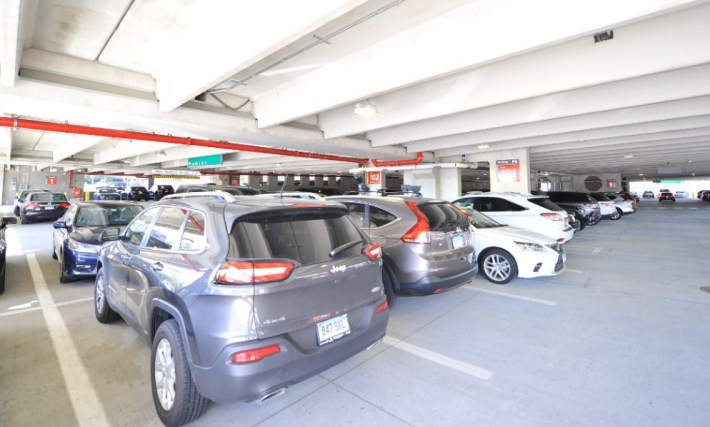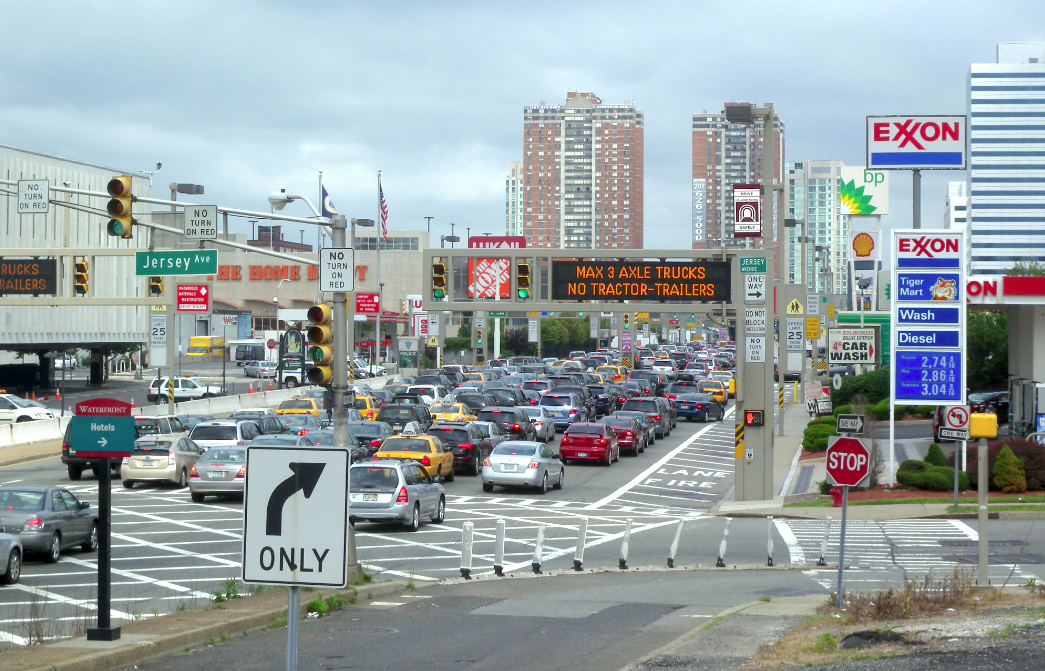The Port Authority of New York and New Jersey likes to project an image of itself as forward-thinking on climate change. The authority, which is controlled by the governors of New York and New Jersey, makes much of the fact that it was the first public transportation agency in America to embrace the Paris Climate Agreement, and that it is spending millions to make its facilities greener in its quest to lessen its carbon footprint by 35 percent by 2025 and 80 percent by 2050. It pays lip service to reducing emissions from the vehicles that flow through its facilities, promising to put on more PATH train cars for commuters and encourage more freight via rail instead of trucks.
But the carbon from the Port Authority's plant pales in comparison to the emissions from the thousands of planes and hundreds of thousands of vehicles that use its facilities daily. The agency could do much more to help transition us to a less carbon-intensive transportation sector — when transportation is responsible for 29 percent of greenhouse gases nationally and 36 percent in New York. Yet it has no incentive to do so because its business model today relies heavily on automobile tolls and airplane and parking fees to pay for the infrastructure we use to move the economy of New York and New Jersey. Fees and tolls from cars and planes are worth $3.5 billion annually and made up 65 percent of the income the authority collected in 2018, its pre-Covid budget for 2019. We saw this dynamic with our own eyes during the pandemic lockdown, when our skies cleared, and the authority's revenues tanked.
And we saw it last week, when the LaGuardia AirTrain got its final federal approval, and the authority's executive director, Rick Cotton, touted the project as "non-polluting" and "sustainable" — when in reality it adds nothing to regional transit and functions mainly as an adjunct to a giant parking lot.
Quite simply, the Port Authority is hooked on revenues from cars, trucks, planes and parking.
If the public truly desires to see a major shift toward environmentally friendly modes such as rail, then the Port Authority should be at the heart of a much larger regional environmental and transportation transition plan reducing agencies' dependence on carbon-heavy income sources. It could prepare a broad, deep review of climate-change goals, regional transportation plans and budgets, and the moving of people, goods and services. The Port Authority — a congressionally mandated, bi-state agency with an annual budget of roughly $8 billion, which in 2019 funneled 122.2 million vehicles eastbound into New York through six crossings and accommodated 140.5 million passengers at four airports — is in the best position to coordinate such an effort.
No such plan exists.
The Regional Plan Association, an august not-for-profit, advances report after report about decarbonizing our economy and integrating our public transportation. Little happens.
In a 2014 report, NYC Roadmap to 80 x 50, the de Blasio administration acknowledged that its stated goal of reducing carbon emissions by 80 percent by 2050 would be hard to achieve without "partnerships" with the Port Authority, the MTA, the New York State Department of Transportation, NJ Transit and Amtrak. Any such regional plan must deal with the financial reality that the Port Authority and the MTA — which also operates a substantial bridge and tunnel system — will need support if they must see their traffic decline. The future of the Gateway project and Amtrak’s Northeast Corridor also must be considered against this backdrop.
Nothing will change unless there is a larger vision and political backing.

In reality, we’ve done little of substance to lessen the number of vehicles and planes using our facilities (although New York's now-stalled congestion-pricing plan would be a start). The only way to realize a major shift away from those modes is to develop a capital plan and supportive budget strategy that weans the Port Authority off airport parking and passenger fees and tolls from the Hudson River crossings. If such objectives aren't reflected in the budgets of the Port Authority, the MTA, NJ Transit, LIRR, Metro-North, and Amtrak, we likely will not see any big improvement in reducing traffic or carbon emissions — period.
Any regional reduction of carbon-intensive transportation must also include a strategy for creating good-paying jobs before closing out old, carbon-dependent jobs and should consider the effect of such a transition on the bond holders who — for now — depend on the Port Authority's (and other agencies') collection of tolls and fees. If environmental advocates don't do this homework, they risk resistance that will likely win the day because it pays the bills.
Other nations and many American cities are taking bolder steps to reduce traffic. London has graduated its congestion charge and instituted a “Ultra Low Emission Zone,” which has reduced traffic from 36,000 to 23,000 vehicles a day and cut emissions by 20 percent. France is forcing a shift of any air travel to rail for any flights under 2.5 hours. Parking reduction, housing density, HOV lanes, gas taxes, employer incentives and many other strategies can reduce vehicle trips and miles; as one such plan noted, "traffic congestion is a choice."
In New York, however, each transportation agency in the region has been rebuilding or adding capacity to its facilities without integrating plans with one another. Are the goals for these large capital projects lined up with regional objectives to reduce carbon, and if they were, what would it mean for the Port Authority?
If we are truly serious about reaching climate-change goals, then moving toward more rail use makes sense. But we need to get real about how we prepare for this change and the resistance to it. Who forces those hooked on car revenues to get clean?
Bob Previdi is a transit consultant and a former planner and spokesman for NYC Transit.







